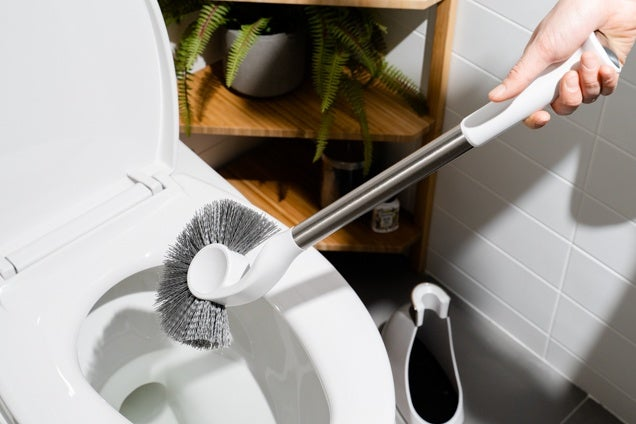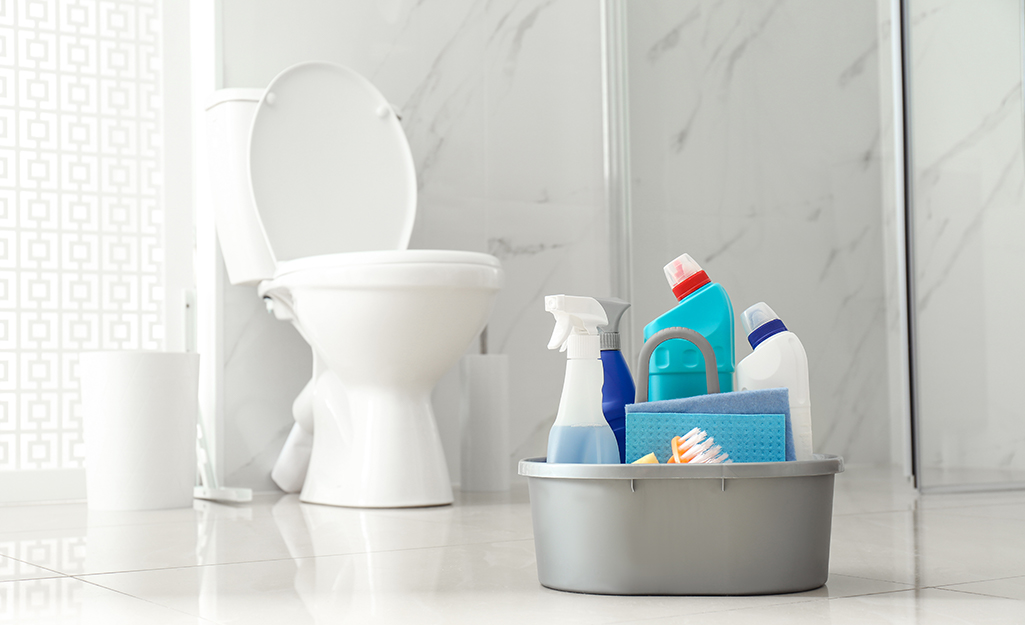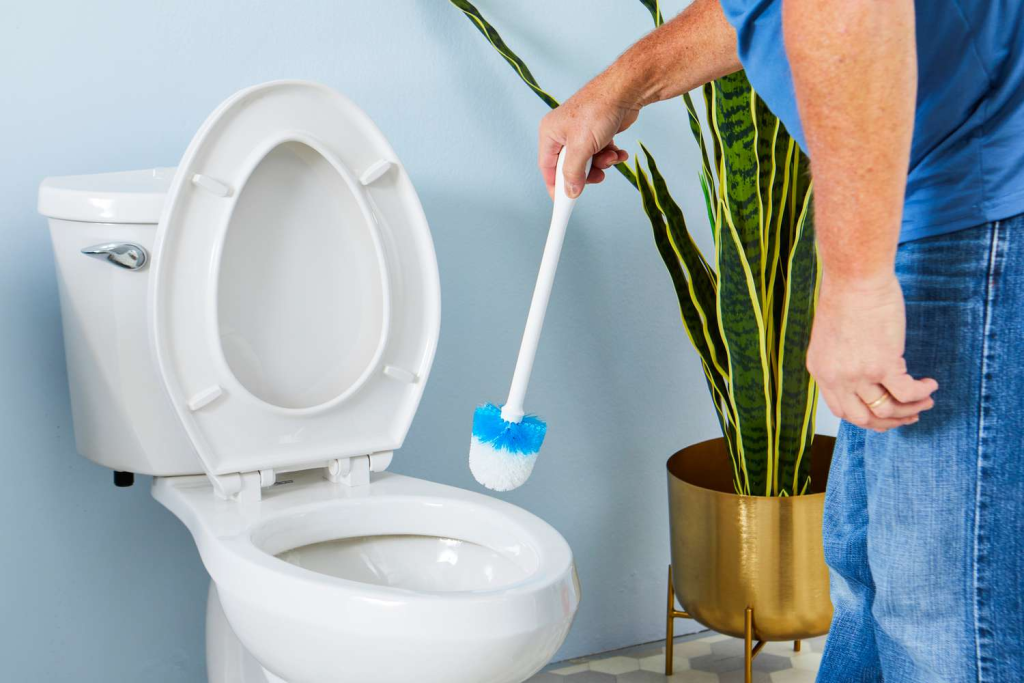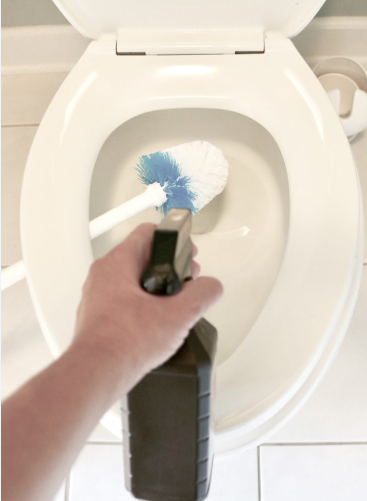Maintaining a pristine bathroom is essential for overall health, and one tool that often gets overlooked is the toilet brush. While it’s indispensable for keeping your toilet clean, a poorly maintained brush can quickly turn into a breeding ground for harmful bacteria. If you’ve ever wondered whether popping your toilet brush in the dishwasher is a safe bet, you’re not alone. In this article, we’ll break down the risks and benefits of different cleaning methods, share practical home remedies, and provide tips to keep your toilet brush—and your bathroom—germ-free.

Understanding the Risks of Using a Dishwasher for Toilet Brush Cleaning
Have you ever considered using your dishwasher to clean your toilet brush? It might seem convenient, but dishwashers are engineered for dishes, not for items that are exposed to heavy bacterial contamination. Here’s why:
- Inadequate Sanitization:
Dishwashers use high-temperature water jets and detergents designed for kitchenware. However, the design and cycle settings may not be sufficient to thoroughly sanitize a toilet brush, especially given its complex bristle structure. - Cross-Contamination Concerns:
When you mix your dirty toilet brush with your clean dishes, there’s a risk that bacteria and germs could transfer to your utensils, plates, or glasses. Imagine reaching for your favorite coffee mug only to discover it’s been tainted by hidden bacteria—yikes! - Potential Appliance Damage:
The hard bristles and any metal components on a toilet brush can damage the interior surfaces of your dishwasher over time. This not only shortens the life of your appliance but could also lead to expensive repairs.
Video: There’s Actually an Easy Way to Clean A Gross Toilet Brush
Exploring Alternative Cleaning Methods
So, if the dishwasher isn’t the answer, what can you do to keep your toilet brush clean and safe? There are several tried-and-true methods that use common household items to disinfect and maintain your brush effectively.
Using Bleach for Effective Disinfection
Bleach is a powerhouse when it comes to eliminating bacteria and germs. To disinfect your toilet brush with bleach:
- Mix Your Solution:
Fill a bucket with hot water and add about one cup of bleach. The hot water helps open up the brush bristles, ensuring that the bleach penetrates thoroughly. - Soak and Sanitize:
Submerge the brush in the solution and let it soak for at least an hour. This extended period allows the bleach to work its magic, killing bacteria and neutralizing any lingering germs. - Rinse and Dry:
After soaking, rinse the brush thoroughly with hot water. Make sure to let it air dry in a well-ventilated area. A dry environment is less likely to harbor bacterial growth.
Cleaning with Hydrogen Peroxide: A Gentle Yet Powerful Option

Hydrogen peroxide is another excellent disinfectant that can help maintain your toilet brush’s cleanliness.
- Direct Application:
Pour hydrogen peroxide directly onto the brush bristles, ensuring every strand is saturated. Let it sit for about 10 minutes; this is long enough to break down bacteria without damaging the brush. - Final Rinse:
Rinse the brush under hot water to remove any residual peroxide. Allow the brush to dry completely before storing it, ideally in an area with good airflow.
The Natural Approach: Vinegar and Baking Soda Method
If you prefer a more eco-friendly and natural cleaning method, vinegar and baking soda can work wonders together.
- Create a Fizzing Action:
Sprinkle a generous amount of baking soda onto the brush. Then, slowly pour white vinegar over it. The resulting fizz will help lift away dirt and bacteria from the bristles. - Let It Sit and Rinse:
Allow the mixture to work for about 15 minutes. Afterward, rinse the brush thoroughly with hot water and let it dry completely. This method not only cleans but also deodorizes, leaving your brush fresh and ready for use.
Routine Maintenance: Key Practices for a Hygienic Bathroom

Regular maintenance of your toilet brush is crucial to preventing bacterial buildup and ensuring it remains effective.
- Daily Rinsing:
After each use, rinse the brush with hot water to remove any residual debris. This simple step minimizes the chances of bacteria thriving in the moist environment. - Proper Storage:
Store your toilet brush in a holder that allows it to drain and dry completely. Avoid enclosed spaces that trap moisture—think of it like leaving your sneakers in the sun to air out after a rainy day. - Scheduled Disinfection:
Make it a habit to disinfect your toilet brush using one of the methods mentioned above at least once a week. Regular disinfection prevents the buildup of harmful microorganisms. - Timely Replacement:
Even with diligent cleaning, toilet brushes have a limited lifespan. Replace your brush every six months to a year, depending on usage and wear. Signs that it’s time for a new one include frayed bristles, persistent odors, or visible mold.
Assessing the Pros and Cons of Keyless Cleaning Options
While some might be tempted to use the dishwasher for convenience, the risks far outweigh the benefits. The specialized design of a dishwasher can lead to inadequate cleaning and even damage, as we’ve discussed. In contrast, traditional cleaning methods—using bleach, hydrogen peroxide, or natural alternatives like vinegar and baking soda—are specifically tailored to tackle the unique challenges posed by toilet brushes.
- Convenience vs. Safety:
Sure, tossing your toilet brush into the dishwasher might save you a few minutes, but that convenience comes with the risk of cross-contamination and potential appliance damage. Isn’t it better to invest a little extra time in a method that guarantees safety and effectiveness? - Cost-Effectiveness:
Most of the ingredients for home cleaning methods are inexpensive and readily available. Bleach, hydrogen peroxide, vinegar, and baking soda are common household staples that provide excellent cleaning power without the need for specialized equipment. - Environmental Considerations:
Using natural cleaning agents can also be kinder to the environment. Many dishwashers consume significant amounts of water and energy, whereas manual cleaning methods let you control usage and reduce your ecological footprint.
Video: 10 Things You Need To Know About Cleaning Your Toilet
Innovative Tips for Long-Term Hygiene
Looking ahead, there are always new ways to improve how we maintain our household items. Here are some extra tips to keep your toilet brush—and your bathroom—spotless:
- DIY Cleaning Solutions:
Experiment with combining different cleaning agents to create a custom solution that works best for your needs. A mix of lemon juice and vinegar, for example, not only cleans but also leaves a refreshing scent. - Regular Check-Ins:
Make it a point to inspect your toilet brush periodically. If you notice any discoloration or persistent odors, it might be time to give it a deep clean or consider a replacement sooner rather than later. - Educate and Involve Your Household:
Ensure everyone in your home understands the importance of keeping the toilet brush clean. A simple reminder to rinse the brush after use or to avoid storing it in a damp place can go a long way in maintaining hygiene.
Conclusion: A Simple Path to a Healthier Bathroom

Keeping your toilet brush clean is more than just a matter of routine—it’s a crucial part of maintaining overall bathroom hygiene and protecting your family’s health. By understanding the risks associated with using inappropriate cleaning methods like dishwashers, and by adopting effective natural cleaning solutions such as bleach, hydrogen peroxide, or a vinegar-baking soda mix, you can ensure that your toilet brush remains a tool for cleanliness rather than a source of contamination.
In addition to choosing the right cleaning methods, regular maintenance practices such as daily rinsing, proper storage, and timely replacement are essential. Remember, a little effort in maintaining your bathroom hygiene goes a long way in preventing the spread of harmful microorganisms and keeping your home a safe, healthy environment.
So, take charge of your cleaning routine, invest in these proven techniques, and enjoy the peace of mind that comes with knowing your bathroom is truly spotless. Small, consistent actions today can lead to a healthier, happier home tomorrow.


